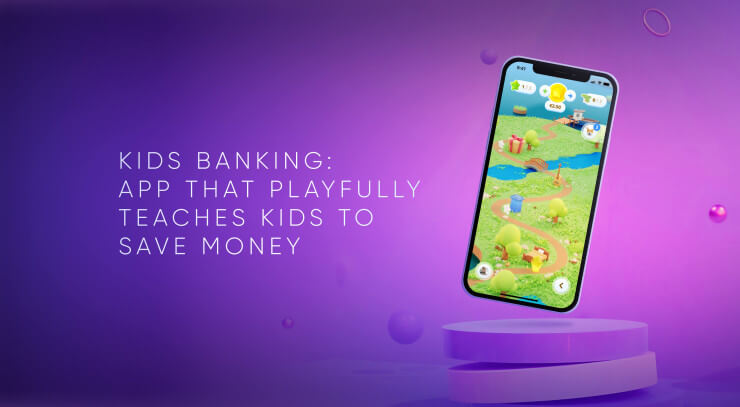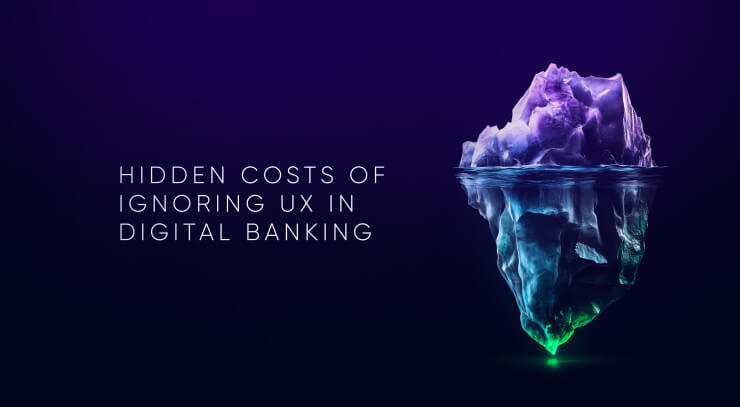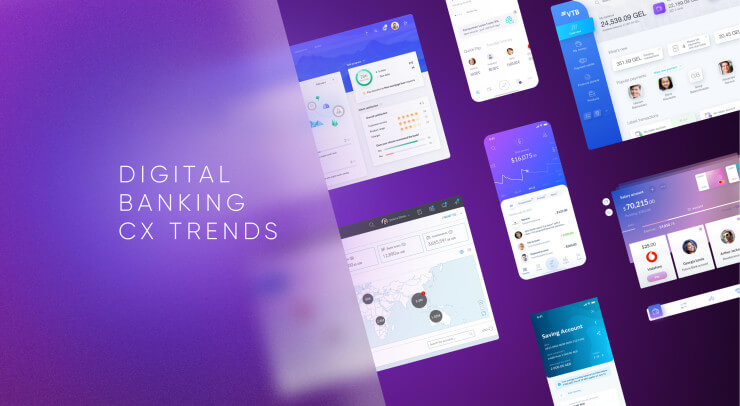For years, traditional banks built their reputations on physical branches and face-to-face customer relationships. But today, they face an existential challenge: nimble Fintech startups are emerging on a global scale, offering convenience, efficiency and mobile reach that simply can’t be matched by local branches alone. Like the shift from local newspapers to global digital news, the globalization of banking is forcing financial institutions to reinvent themselves. The question isn’t if the rules of banking will change, but how quickly they’ll be rewritten and who will thrive in this new global digital reality.
Remember when people woke up, stepped outside and picked up the local newspaper from their front porch—once the only source of community gossip and news? Today, global digital media platforms have taken its place. Instead of grabbing a physical paper off your doorstep, you now swipe through countless news feeds—each curated to your personal interests and accessible from anywhere in the world. This swift digital transition, which once seemed shocking in the media industry, is now unfolding in banking with equal, if not greater, intensity.
In this article, we’ll explore how Fintech-driven banking globalization mirrors the media industry’s transformation, what obstacles and opportunities arise when financial services become borderless and how artificial intelligence (AI) is poised to change the game even further. The stakes are high, and the outcome will determine how banks, Fintech firms and consumers alike adapt to a world where innovation, not tradition, is the new currency of success.
The Rise of Global Fintech Services
The banking industry has undergone a seismic shift: the globalization of banking, driven by innovative Fintech services, has fundamentally altered the rules of the game. Fintech companies, armed with advanced technologies, such as artificial intelligence, blockchain and big data analytics, have introduced a plethora of new services. These services, including digital payments, peer-to-peer lending, robo-advisors and cryptocurrency exchanges, offer unparalleled convenience, speed and efficiency.
Fintech's global approach allows these services to scale rapidly across borders, reaching millions of customers without the need for physical infrastructure. This scalability has been a game-changer, enabling Fintech firms to challenge traditional banks on a global stage. Companies like PayPal, Revolut, Wise and N26 have demonstrated the potential to disrupt established banking models by providing seamless, borderless financial solutions available worldwide.
Don't these changes in the banking industry, driven by globalization and Fintech innovations, remind you of the transformation the media industry has undergone over the past decade? The media industry has transitioned from localized, physical models to global, digital ecosystems, profoundly altering how consumers interact with and consume media.
The rise of neobanks in global digital banking is shaping a new competitive landscape, overcoming domestic banking obstacles. Similar to global social networks that disrupted the media market, such a banking globalization could totally rearrange competition rules in the financial industry.
Let's compare changes driven by digital globalisation to media and banking:
Media Industry

Old Model:
- Physical Distribution: A century ago, news consumption was a localized affair. Residents relied on their town newspapers, delivered to their doorsteps or post boxes each morning. These newspapers were produced by local journalists and catered specifically to the interests and concerns of the local community.
- Limited Scope: The information was regionally focused, and readers had limited access to national or international news, unless it was included in their local paper or they subscribed to larger, national publications.
New Model:
- Digital Distribution: Today, news consumption is predominantly digital and global. Social media platforms, news apps and online news portals deliver real-time information from around the world directly to users' smartphones, based solely on their interests.
- Global Reach: Consumers have instant access to a wide range of sources and perspectives—from local incidents to global events. Algorithms curate news feeds based on user preferences, making news consumption highly personalized yet broad in scope.
Banking Industry

Old Model:
- Physical Branches: Traditionally, banking was a localized service. Customers visited their local bank branches for transactions, account management and financial advice. Banks built relationships with their customers through face-to-face interactions and community involvement.
- Geographical Constraints: Banking services were largely confined to specific regions, with limited cross-border operations. Expanding services required significant investment in physical infrastructure and personnel.
New Model:
- Digital Banking: The rise of Fintech has shifted banking to a digital model. Mobile banking apps, online financial services and digital payment systems allow customers to manage their finances anytime, anywhere.
- Global Operations: Fintech firms operate on a global scale, offering seamless, borderless financial solutions. Traditional banks are also expanding their digital offerings and entering new markets through digital channels, reducing the need for physical branches.
The Future of Banking in a Globalized World
The globalization of banking, fueled by Fintech innovation, is an irreversible trend. As financial services continue to evolve, the lines between traditional banks and Fintech firms will continue to blur. Collaboration, rather than competition, will define the future of the industry. Traditional banks must embrace change, leveraging technology to offer superior customer experiences and remain competitive in a global marketplace.
Traditional banks, once the unchallenged pillars of the financial world, now face intense competition from agile Fintech startups. Following are several key areas in which Fintech has changed the rules of the game:
Customer Acquisition and Engagement
- Old Model: Banks traditionally relied on physical branches to build relationships with local communities. Personal interactions and in-branch services were the primary means of customer engagement.
- New Model: Fintech firms utilize digital platforms to reach customers globally. Mobile apps, social media and online marketing allow them to acquire and engage customers without geographical limitations. This shift has compelled banks to enhance their digital presence and offer seamless online experiences.
Product and Service Innovation
- Old Model: Traditional banks often faced challenges in quickly adapting to new market demands due to legacy systems and regulatory constraints. Innovation was incremental and localized.
- New Model: Fintech companies operate with a startup mentality, prioritizing rapid innovation and customer-centric solutions. They leverage data analytics to understand customer needs and develop tailored digital products, pushing banks to adopt a more agile and innovative approach.
Cost Efficiency
- Old Model: Maintaining physical branches and a large workforce resulted in high operational costs for traditional banks. These costs were often passed on to customers through fees and charges.
- New Model: Fintech firms, operating predominantly online, have significantly lower overhead costs. This allows them to offer competitive pricing and attractive fee structures, pressuring banks to find ways to reduce costs and enhance efficiency.
Regulatory Challenges
- Old Model: Banks were accustomed to navigating complex regulatory environments within their home countries. Cross-border operations were limited and involved significant compliance challenges.
- New Model: Fintech firms often operate across multiple jurisdictions, facing varying regulatory landscapes. This requires a nuanced understanding of global regulations and the ability to adapt swiftly. Traditional banks are now investing in compliance technologies and cross-border expertise to remain competitive.
Financial Inclusion and Microservices
- Old Model: Traditional banking often catered to established markets and wealthy clients. Customers with little to no credit history, especially in developing regions, found it challenging to access even basic banking services.
- New Model: Fintech solutions now leverage mobile technology and micro-lending platforms to reach underserved populations. By offering low-cost, easily accessible financial products, Fintechs expand global financial inclusion and open new market segments for traditional banks willing to partner or innovate.
Open Banking and API Integration
- Old Model: Banks operated in silos, with proprietary systems designed to keep customer data within a single institution. Third-party collaborations were limited and often required lengthy negotiations.
- New Model: Open Banking regulations and APIs (Application Programming Interfaces) allow third-party developers to build new services on top of a bank’s data and infrastructure (with customer consent). This fosters a vibrant ecosystem in which banks, Fintechs and tech giants collaborate to create more personalized and convenient financial products for customers.
Embedded Finance
- Old Model: Banking was typically a standalone service. Consumers visited a bank branch or separate banking app for credit, payments or transfers, creating multiple points of friction.
- New Model: Financial services are increasingly integrated into non-financial platforms—think of e-commerce apps offering instant credit at checkout or ride-hailing apps enabling in-app wallets. Banks that partner with these platforms can seamlessly reach new customers and revenue streams without relying solely on branch networks.
Blockchain and Tokenization
- Old Model: Transactions relied on multiple intermediaries for clearance and settlement, resulting in delays and higher costs. Physical documentation often slowed cross-border transactions and investments.
- New Model: Blockchain technology provides a decentralized ledger system that can speed up settlements and reduce transaction fees. Tokenization of assets—ranging from real estate to stocks—enables fractional ownership and expanding investment opportunities, creating new, borderless financial products.
Cybersecurity and Digital Trust
- Old Model: Security primarily focused on physical assets (e.g., vaults, secure document storage) and localized IT infrastructure. Financial fraud was often mitigated through manual checks and in-person verification.
- New Model: As the banking experience becomes almost entirely digital, cybersecurity has become paramount. From encrypted digital wallets to advanced biometrics and AI-driven fraud detection, building and maintaining customer trust is essential. Banks and Fintechs must continuously invest in next-generation security solutions to protect customer data and financial assets.
ESG and Sustainable Finance
- Old Model: Environmental, Social and Governance (ESG) considerations were often seen as philanthropic side projects. Traditional banks focused mainly on profit-driven products and had limited transparency in their investment portfolios.
- New Model: Growing consumer and investor awareness around sustainability pressures banks to align products and investments with ESG principles. Fintech platforms that offer green finance, carbon footprint tracking and/or social-impact investing attract a new generation of socially conscious consumers, compelling traditional banks to integrate ESG into their core strategies.
Now consumers have more control over what news they consume and when, leading to a more engaged and informed audience. The immediacy of digital news means consumers expect real-time updates, driving a 24/7 news cycle. The media landscape will continue to evolve with advancements in technology. Virtual reality (VR) and augmented reality (AR) could provide immersive news experiences, while AI-driven journalism could automate news production and curation.
Digital services allow customers to perform banking transactions at their convenience, without the need to visit a branch. The future of banking will likely see further integration of technologies such as blockchain, which could revolutionize transactions and security. The integration of innovative technologies like AI and big data allows for innovative services, such as robo-advisors and instant loans. Open Banking initiatives and partnerships between traditional banks and Fintech firms will create a more interconnected financial ecosystem.
The Role of AI in Raising Global Competition
Soon, AI technologies will lead to a highly competitive environment in global digital banking by enabling banks to innovate beyond traditional financial services. For instance, AI could facilitate advanced data analytics, which banks use to understand customer behavior deeply and tailor services to individual needs. Additionally, AI-driven automation and smart algorithms will allow banks to offer personalized financial advice and improve customer service, thereby enhancing their competitiveness on a global scale.
AI will help to overcome several significant obstacles that have traditionally plagued the banking industry. The integration of AI in banking is a logical step in market development, much like the evolution seen in global social networks:
- Enhanced Security: AI could enhance security measures by implementing advanced fraud detection systems that learn from transaction patterns to identify and prevent potential fraud before it occurs.
- Operational Efficiency: AI-driven automation could streamline operations—from customer onboarding processes to routine transactions—which will significantly reduce costs and improve digital service speed and reliability.
- Customer Experience: Through personalized services and real-time assistance, AI could improve customer satisfaction and engagement, addressing the growing demand for services that are not only secure but also conveniently accessible from digital platforms.
AI's role in future banking will be pivotal in transforming how banks operate, compete and serve customers, mirroring the transformative impact of technology seen in other industries like media through social networks. This shift will not only address traditional challenges but will also set the stage for a dynamic, highly competitive global banking environment.
Traditional Banks Embrace Customer-Focused Digital Experiences
In a world where financial services are becoming ever more global and technology-driven, traditional banks must pivot from their legacy approaches to a vision that places customers at the center of every interaction. UXDA’s financial UX experts team uses Dopamine Banking principles and a Digital Experience Branding framework to keep financial brands' digital services relevant and customer-centric in a global Fintech landscape.
By weaving user empathy, innovative collaboration and trust-building measures into their strategies, traditional banks can remain indispensable in an increasingly globalized financial ecosystem. This renewed focus on customer-centered design—driven by both emotional engagement and technological excellence—positions banks to thrive alongside Fintech disruptors, delivering experiences that resonate with the real-world needs and aspirations of a diverse, worldwide customer base.
Here’s how banks are redefining themselves to stay relevant and customer-centric in a global Fintech landscape:
Holistic Digital Transformation
- Beyond Core Upgrades: Updating legacy systems is only the first step. Forward-thinking banks adopt a comprehensive digital strategy that prioritizes user-friendly design, frictionless interfaces and seamless customer journeys across all platforms.
- Positive Emotional Interactions: By creating delightful digital moments—whether it’s an intuitive sign-up flow or streamlined loan approval—banks can transform routine transactions into engaging experiences that foster long-term loyalty.
- Cohesive Brand Identity: From mobile apps to online portals, high-performing banks focus on consistent branding and messaging across channels. This ensures that customers experience a unified visual and functional journey, reinforcing trust and familiarity.
Collaborative Innovation and Ecosystems
- Strategic Fintech Partnerships: Rather than reinventing every emerging technology, banks can accelerate innovation by partnering with or acquiring Fintech startups. These collaborations help deliver cutting-edge products and features that match evolving customer expectations.
- Embedded Finance and Platform Integration: Banks extend their reach and reduce friction by integrating services directly into popular apps and websites—offering, for example, instant credit in e-commerce checkout flows. This not only meets customers where they are but also creates new revenue streams.
- Agile Experimentation: By rapidly prototyping new digital services and gathering real-time feedback, banks can adapt swiftly to market demands. An agile mindset allows them to refine products continuously and differentiate themselves in a competitive landscape.
Empathy-Driven Customer Engagement
- Deep User Insights: Research-based customer personas and empathy mapping enable banks to identify pain points and opportunities for delight. This ensures new products address real needs, creating genuine value and fostering loyalty.
- Personalization Through Data: Harnessing analytics and AI, banks can offer tailored recommendations—such as budgeting tips or customized investment portfolios—based on individual preferences and behaviors. Responsible data usage and transparent policies are critical to maintaining trust.
- Emotional Connection and Long-Term Loyalty: Each digital touchpoint is an opportunity to strengthen the emotional bond between banks and customers. By demonstrating empathy, responsiveness and clear communication, banks can cultivate relationships that last beyond just transactional interactions.
Regulatory Innovation and Digital Trust
- Next-Generation Compliance: As banks expand across borders, advanced Regulatory Technology (RegTech) solutions help automate compliance and reduce operational overhead. This allows them to deliver fast, user-centric digital experiences without sacrificing security.
- Security as a Competitive Advantage: From AI-driven fraud detection to biometric authentication, robust security protocols are paramount. A bank’s commitment to safeguarding customer data can become a key differentiator in a market flooded with new entrants.
- Transparency and Responsibility: Consumer awareness around data privacy and ethical behavior is at an all-time high. Banks can build goodwill by openly explaining their data practices and demonstrating social responsibility, turning trust into a critical brand asset.
Reevaluating Physical Footprints
- Branch Innovation: With digital channels now driving most customer interactions, traditional banks are consolidating or repurposing physical branches into experiential spaces. These enhanced locations focus on high-value services like personalized advisory and relationship-building rather than routine transactions.
- Local Community Engagement: Even as global competition intensifies, banks can retain a local touch by turning branches into community hubs. Educational workshops, networking events and customer advisory sessions help banks deepen trust and remain relevant in a digital-first era.
Prioritizing Financial Wellness
- Educational Tools and Resources: Banks are expanding beyond simple account management to offer interactive budgeting tools, credit score tracking and personalized financial tips. By helping customers improve their financial literacy, banks enhance loyalty while fulfilling a broader social mission.
- Proactive Guidance: Leveraging data insights, banks can detect early warning signs of financial stress—such as missed payments or unusual spending—and proactively offer support. This shifts the bank’s role from a reactive service provider to a proactive advisor, strengthening customer relationships.
Cultivating Brand Advocacy and Loyalty
- Rewarding Customer Achievements: From homeownership to starting a business, banks can celebrate customer milestones with tailored benefits or exclusive offers. Recognizing life events fosters emotional connections and boosts long-term loyalty.
- Community-Building Initiatives: Beyond traditional loyalty programs, banks can create online communities in which users share insights, ask questions and learn from peers. These spaces build brand advocacy and offer continuous feedback for product and service improvements.
Ensuring Omnichannel Consistency
- Unified Design and Messaging: Customers expect a cohesive experience, whether they’re using a mobile app, visiting a website or speaking to a customer service representative. Ensuring consistent visuals, language and tone across channels reinforces brand identity and reduces friction.
- Seamless Data Integration: By centralizing customer information, banks can provide personalized services across touchpoints. For example, customer preferences saved in the mobile app can inform more relevant offers via email, chatbots or in-branch interactions.
Emphasizing Co-Creation and User Feedback Loops
- Continuous Iteration: Banks that actively seek and act on customer input can rapidly refine their digital solutions. Early access programs, beta launches and user testing sessions help banks respond to evolving needs and preferences.
- Personalized Product Development: By collaborating directly with customers—whether through focus groups or social media polls—banks can develop features that address real-world pain points. This approach reduces time-to-market while fostering a sense of shared ownership.
Elevating Ethical Data Management
- Transparent Data Policies: Banks can differentiate themselves by clearly outlining how customer data is collected, stored and used, building trust in an age of high-profile data breaches and regulatory scrutiny.
- Responsible AI and Analytics: With AI-driven insights shaping everything from loan approvals to investment advice, banks must ensure their algorithms respect privacy, mitigate bias and deliver fair outcomes. Prioritizing ethical frameworks fosters long-term credibility and safeguards customer well-being.
Conclusion: A New Era of Global Financial Services
As borders dissolve in the digital realm, the banking industry stands at the brink of a profound transformation—one that shifts power decisively to the customer. Similar to how global media platforms reshaped the way we consume news, Fintech-driven globalization is redefining banking by prioritizing accessibility, personalization and transparency. Yet this story isn’t simply about old institutions being overtaken by agile newcomers; it’s about collaboration that benefits the end user. Forward-thinking banks and Fintechs have the opportunity to co-create a financial ecosystem that feels less like a maze of fees and restrictions and more like an open, intuitive service built around individual needs.
In this emerging era, artificial intelligence, blockchain and embedded finance aren’t just buzzwords; they are catalysts for a world in which anyone, anywhere, can seamlessly manage and grow their assets. This opens the door to a new kind of global financial inclusion—one that empowers underbanked communities and responds to the growing demand for socially responsible, sustainable investments. As these technologies mature, the banks that succeed will be those that balance innovation with trust, delivering secure, customer-centric solutions at scale.
From local branches to digital platforms, the rules of the banking game are being rewritten, and the ultimate beneficiaries will be the customers. The real winners won’t be those clinging to legacy models or those focusing solely on disruption; rather, it will be the institutions and Fintechs that harness technology in the service of human needs. This positive, collaborative future promises a more inclusive financial landscape—one in which personalization, transparency and social impact become the hallmarks of truly global banking services.
Discover our clients' next-gen financial products & UX transformations in UXDA's latest showreel:
If you want to create next-gen financial products to receive an exceptional competitive advantage in the digital age, contact us! With the power of financial UX design, we can help you turn your business into a beloved financial brand with a strong emotional connection with your clients, resulting in success, demand, and long-term customer loyalty.
- E-mail us at info@theuxda.com
- Chat with us in Whatsapp
- Send a direct message to UXDA's CEO Alex Kreger on Linkedin


















